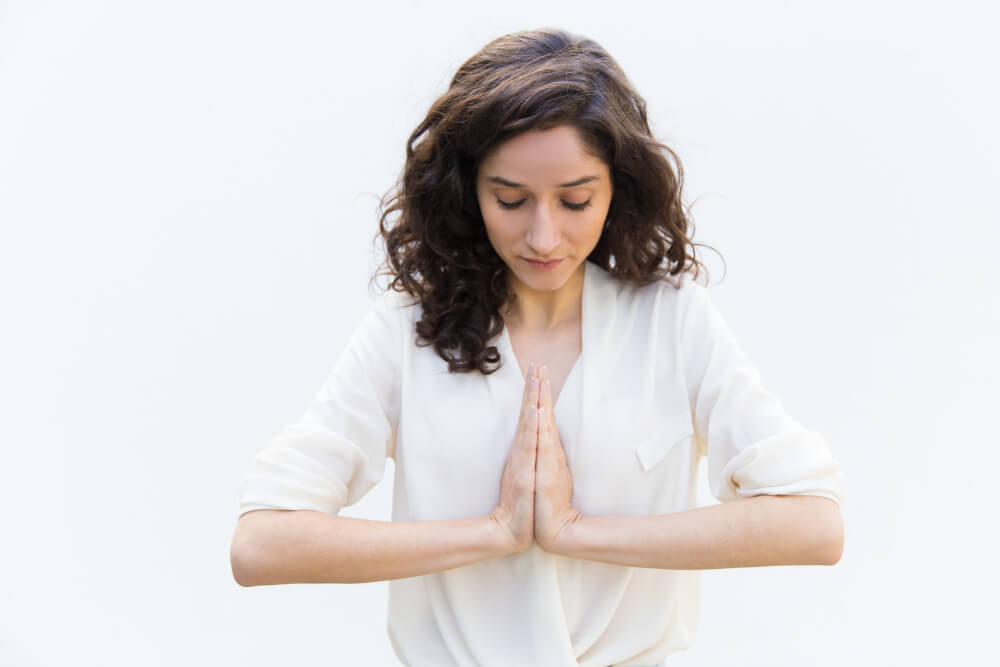
Anjali Mudra, also known as Namaste Mudra or Prayer Gesture, is a revered hand gesture deeply ingrained in various cultural and spiritual traditions. This simple yet profound gesture goes beyond a mere physical action – it embodies respect, unity, and a connection between oneself and the universe. Let’s delve into the significance and practice of Anjali Mudra.
Origin and Meaning
Originating from Sanskrit, “Anjali” translates to “offering” or “salutation,” and this mudra exemplifies just that. It’s a gesture of reverence, gratitude, and humility, commonly used as a greeting or farewell in Indian and other Eastern cultures. Anjali Mudra signifies the acknowledgment of the divine spark within ourselves and others, fostering a sense of equality and interconnectedness.
Spiritual and Cultural Significance
Beyond the physical realm, Anjali Mudra has profound spiritual and cultural connotations. In Hinduism, it’s a way of recognizing the divine presence within oneself and in others. The gesture symbolizes the fusion of opposites, like the masculine and feminine energies, suggesting balance and unity. In Buddhism, Anjali Mudra expresses devotion, gratitude, and an open heart.
Steps to Perform Anjali Mudra:
Follow the below steps to perform Anjali Mudra:
- Begin in a comfortable seated position, preferably in a quiet and peaceful space.
- Bring your palms together in front of your heart center, fingers pointing upward.
- Gently press the palms and fingers together, ensuring all fingertips touch evenly.
- The thumbs rest lightly against the sternum, creating a connection to the heart chakra.
- Maintain a gentle pressure between the palms without straining.
- The gesture can be done at the beginning or end of a yoga practice, meditation session, or even as a gesture of respect when encountering others.
Benefits of Anjali Mudra:
While deeply rooted in spirituality, Anjali Mudra also offers practical benefits.
- Mindfulness and Focus: The act of bringing the hands together in Anjali Mudra helps draw your attention inward, promoting mindfulness and enhancing concentration during meditation or yoga practice.
- Stress Reduction: The calming nature of the gesture and the connection to the heart center can help alleviate stress and anxiety, bringing a sense of tranquility to the mind.
- Heart Chakra Activation: Anjali Mudra is believed to activate the heart chakra, fostering feelings of compassion, love, and empathy towards oneself and others.
- Balance and Unity: The gesture symbolizes the fusion of opposites, representing harmony and unity between different aspects of oneself and the universe. This can bring a sense of balance to your practice and life.
- Cultural and Spiritual Connection: Anjali Mudra carries cultural and spiritual significance, connecting you to the traditions of various Eastern cultures and allowing you to experience a sense of reverence and humility.
- Thymus Stimulation: The gentle pressure of the thumbs against the sternum can stimulate the thymus gland, which is associated with immune system function, potentially boosting your overall well-being.
- Expression of Gratitude: By bringing your hands together, you symbolically offer gratitude and respect to yourself, others, and the divine, cultivating a sense of humility and appreciation.
- Heart-Opening: Anjali Mudra encourages an opening of the chest and heart space, promoting better posture and respiratory function. This can also lead to increased feelings of openness and vulnerability.
- Connection to Higher Self: The mudra’s representation of the connection between the individual and the divine can help you feel more in tune with your higher self, enhancing your spiritual journey.
- Elevated Mood: The gesture’s calming and centering effects can contribute to an uplifted mood and a more positive outlook on life.
Incorporating Anjali Mudra
Incorporating Anjali Mudra into your daily routine can be a transformative practice. Begin or conclude your yoga or meditation practice with this gesture, allowing it to guide you into a focused and present state. In moments of stress or conflict, adopting Anjali Mudra can help shift your perspective and foster empathy.
In conclusion, Anjali Mudra transcends cultural and spiritual boundaries, uniting humanity in a shared gesture of respect and connection. Through this simple action, we honor the light within ourselves and others, fostering a sense of unity and compassion. Whether as a symbol of gratitude, a gesture of greeting, or a means of self-centering, Anjali Mudra reminds us of our interconnectedness in an increasingly complex world.












































